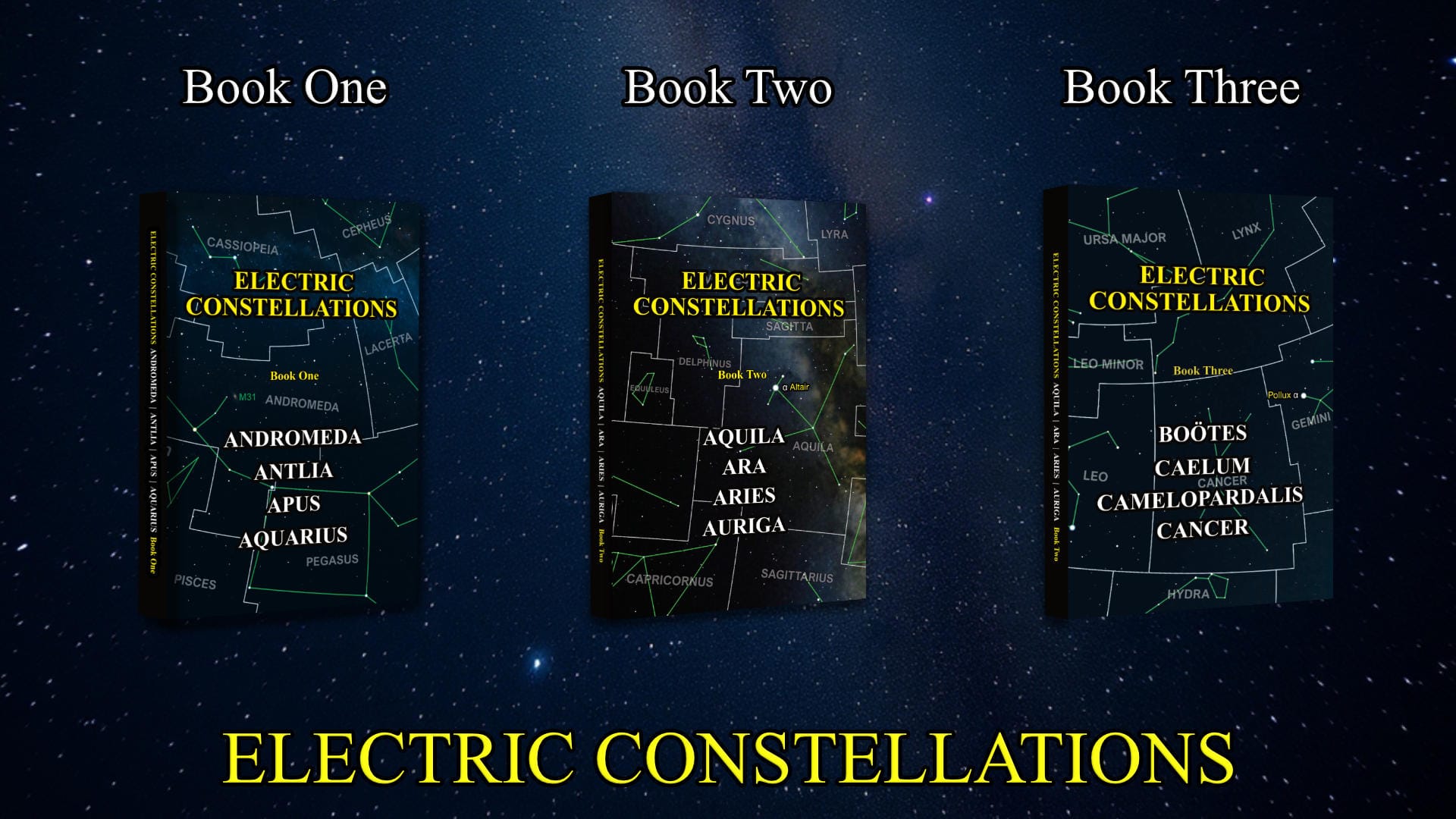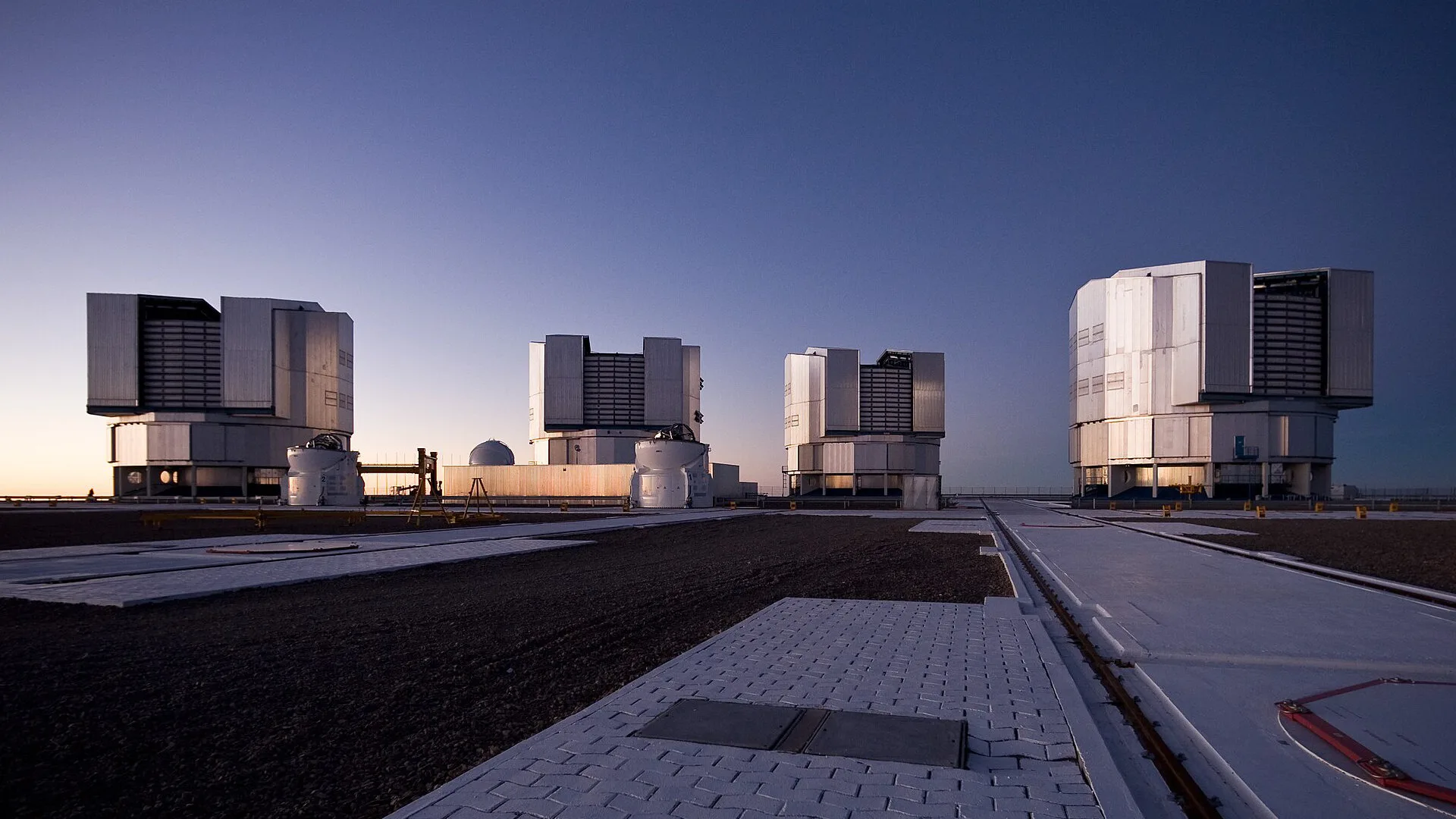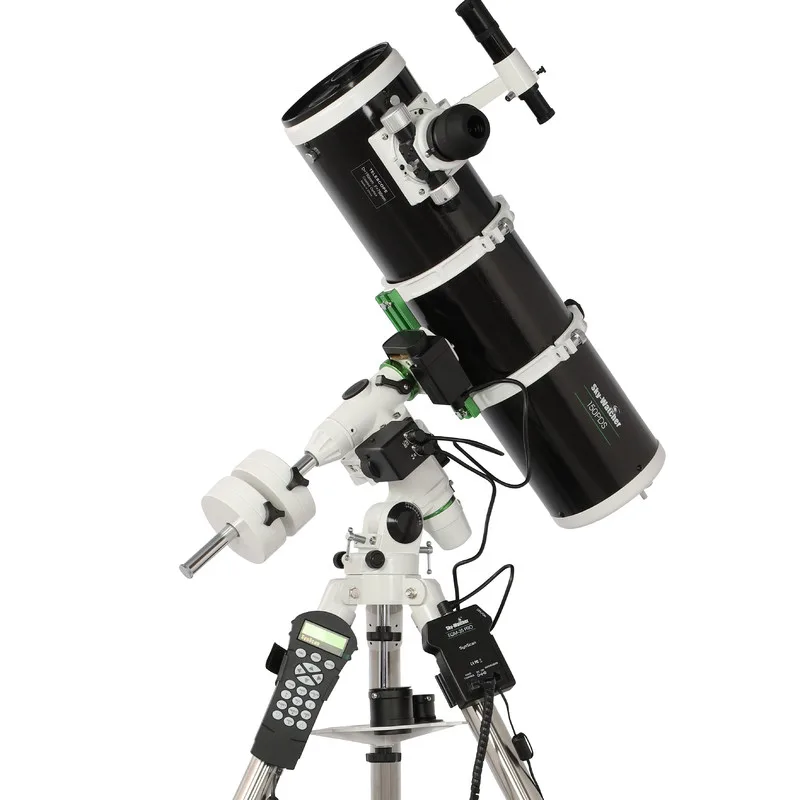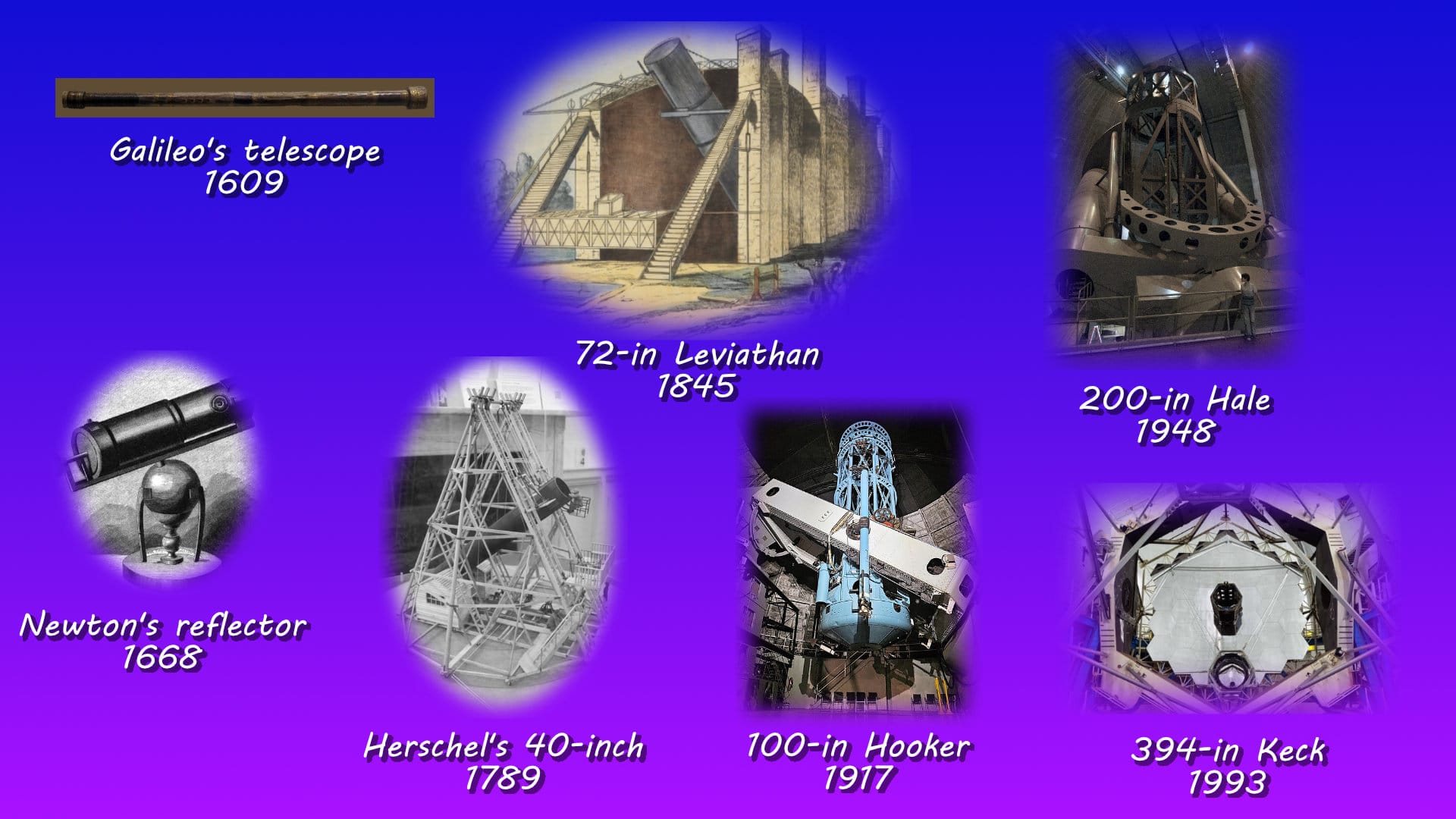Ground-based Optical Telescopes: Paranal Platform. Image credit: ESO/H. H. Heyer
At a Glance
Looking up at the night sky has fascinated humanity since time immemorial, but it wasn’t until the invention of the telescope that we began to truly understand our place in the cosmos. The evolution of ground-based telescopes represents one of humanity’s greatest technological journeys, transforming from simple hand-held instruments to massive engineering marvels that pierce the deepest reaches of space.
The history of optical telescopes reveals not just technological innovation but our deepening relationship with the universe itself. Each advancement has peeled back another layer of cosmic mystery, challenging our assumptions and expanding our horizons. This exploration of telescope evolution shows how human ingenuity has consistently overcome seemingly insurmountable obstacles to bring the stars within our reach.
The ground-based optical telescopes journey began in the early 17th century, forever changing humanity’s relationship with the cosmos. Though Hans Lippershey, a Dutch eyeglass maker, is often credited with the first telescope patent application in 1608, it was Galileo Galilei who first pointed these revolutionary instruments skyward for serious astronomical observation. This single act transformed astronomy from a discipline of naked-eye observation to one built on increasingly sophisticated technology.
The basic principles of telescope design—collecting light and magnifying distant objects—remain unchanged after four centuries, but the methods have evolved dramatically. From simple tubes with glass lenses to massive mirrors spanning meters in diameter, telescopes have grown in size, complexity, and capability. They’ve progressed from instruments that could barely resolve Jupiter’s moons to technological marvels capable of detecting light from the universe’s earliest galaxies.
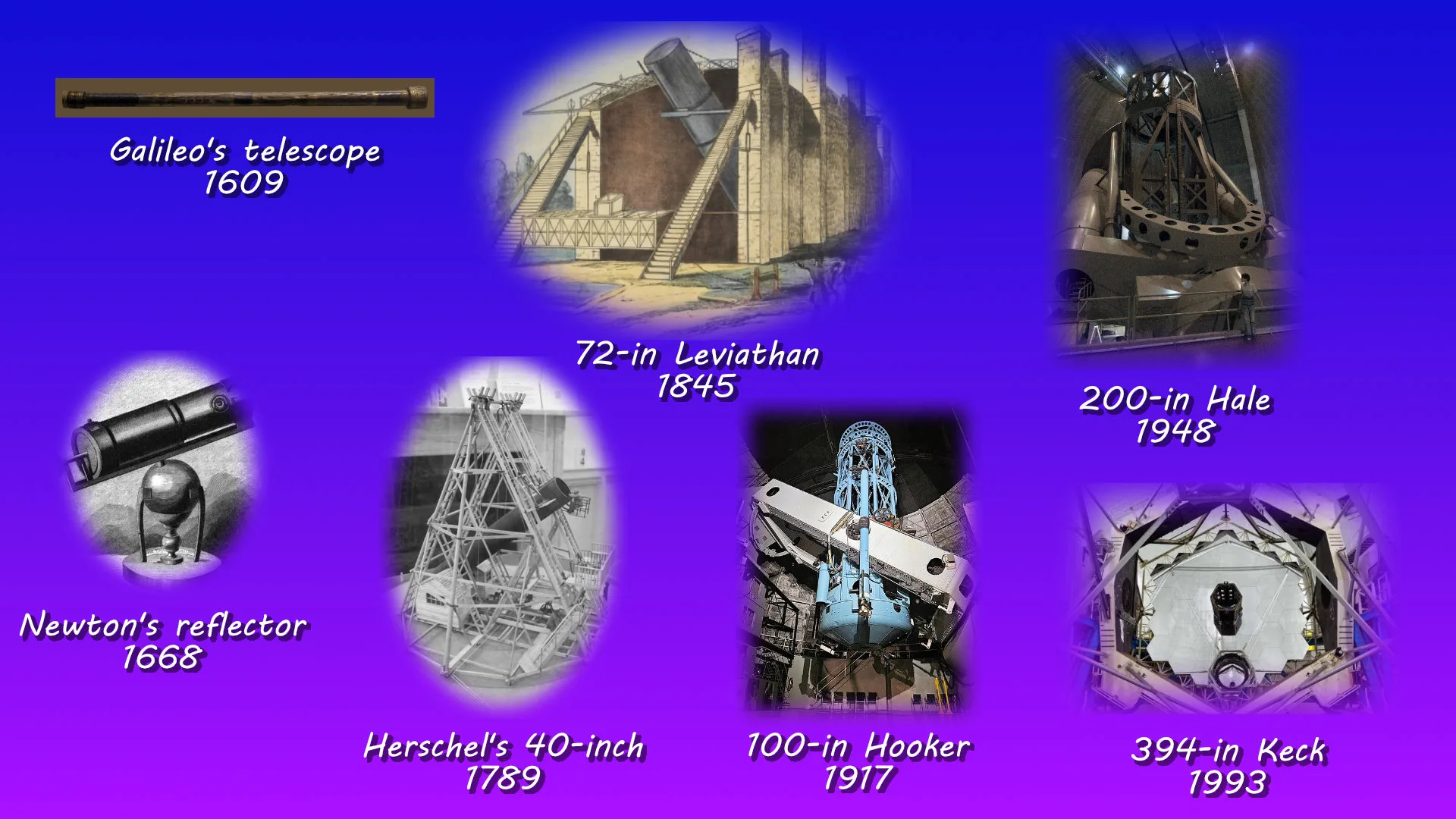
The most profound impact of telescopic observation has been philosophical as much as scientific. As instruments revealed the true nature of planets, stars, and galaxies, humanity’s perception of our cosmic significance dramatically shifted. From the center of creation to inhabitants of an ordinary planet orbiting an ordinary star in one galaxy among billions, telescope discoveries have repeatedly humbled and inspired us.
When Galileo Galilei turned his modest instrument toward the heavens in 1609, he unleashed a revolution in human understanding. His first telescope achieved only about 3x magnification, but he quickly improved his designs, eventually creating instruments with up to 30x magnification. These simple tools were enough to reveal mountains and craters on the Moon, the phases of Venus, and Jupiter’s four largest moons—observations that provided crucial evidence supporting the Copernican heliocentric model of the solar system.
Galileo’s Breakthrough Refracting Telescope
Galileo’s design, now known as a refracting telescope, used a convex objective lens to gather light and a concave eyepiece lens to magnify the image. Though revolutionary, these early refractors suffered from chromatic aberration—colored fringes around bright objects caused by different wavelengths of light focusing at different distances. As astronomers pushed for greater magnification, telescopes grew impractically long, sometimes exceeding 100 feet, to minimize this distortion. Johannes Hevelius even constructed a 150-foot “aerial telescope” suspended by masts and pulleys, demonstrating both the ingenuity and desperation of early astronomers to see further and more clearly.
Newton’s Reflecting Telescope: A Game-Changer
In 1668, Isaac Newton fundamentally changed telescope design by introducing the reflecting telescope. Rather than using lenses to collect light, Newton employed a curved primary mirror, eliminating chromatic aberration. His design used a small secondary mirror placed at a 45-degree angle to redirect the light to an eyepiece mounted on the side of the tube. This configuration allowed for much shorter, more practical instruments while maintaining magnification power.
Though Newton’s first reflector was just six inches long with a 1.3-inch mirror, its significance was enormous. Reflecting telescopes could theoretically be built to any size, limited only by the ability to cast and polish precise mirrors—a constraint that would drive telescope innovation for centuries to come. Despite this breakthrough, reflectors didn’t immediately replace refractors, as early mirrors made from speculum metal (a copper-tin alloy) tarnished quickly and reflected only about 60% of incoming light.
How Early Telescopes Changed Our Understanding of the Solar System
The astronomical discoveries made with these primitive ground-based optical telescopes permanently altered humanity’s worldview. Before telescopes, the heavens were thought to be perfect and unchanging—spheres within spheres carrying celestial bodies in eternal, circular orbits. Galileo’s observations of Jupiter’s moons demonstrated that not all celestial bodies orbited Earth, while his detection of sunspots and lunar mountains shattered the notion of heavenly perfection.
By the late 1600s, telescopes had revealed Saturn’s rings, enabled the first measurement of the speed of light (by Ole Rømer observing Jupiter’s moons), and allowed Giovanni Cassini to discover the gap in Saturn’s rings that now bears his name. These observations, impossible to the naked eye, transformed astronomy from a branch of mathematics concerned with predicting celestial positions into an observational science investigating the physical properties of celestial bodies.
CCD Detectors Replace Photographic Plates
The astronomical revolution of the late 20th century was driven not by larger mirrors but by transformative digital technology. Charge-Coupled Devices (CCDs) replaced photographic plates in the 1970s and 1980s, increasing sensitivity by a factor of 20 or more. Unlike photographic emulsions that captured only about 1% of incoming photons, CCDs could register up to 90 percent of light striking their silicon surfaces. These electronic detectors also provided immediate digital data, eliminating the time-consuming chemical developing process and enabling astronomers to process images with computer algorithms to remove defects and enhance details.
Computer-Controlled Tracking Systems
As telescopes grew larger, the precision required to keep them accurately pointed became increasingly challenging. Traditional mechanical tracking systems gave way to computer-controlled servo motors capable of maintaining accuracy measured in fractions of an arcsecond. These systems compensated for Earth’s rotation so seamlessly that exposures could last hours instead of minutes, allowing astronomers to capture significantly fainter objects.
The computerization of telescopes extended beyond tracking to every aspect of observatory operation. Astronomers could now control instruments remotely, often from comfortable control rooms rather than freezing observatory domes. This shift made observing more efficient and opened new possibilities for remote operation, where astronomers could conduct observations from thousands of miles away or even schedule observations to run automatically when conditions were optimal.
The success of radio interferometry—combining signals from widely separated radio telescopes to achieve the resolution of a much larger telescope—inspired optical astronomers to pursue similar techniques.
While optical interferometry proved far more challenging due to the shorter wavelengths involved, advances in precision optics and computing made it possible to combine light from separate telescopes coherently. This approach effectively created virtual telescopes with baselines (and thus resolving power) far exceeding what could be achieved with single mirrors, enabling astronomers to directly observe details like the surfaces of nearby stars and the environments around forming planetary systems.
A groundbreaking development in telescope design came with the Multi-Mirror Telescope (MMT) at Mount Hopkins, Arizona, which began operation in 1979. Rather than struggling with the challenges of casting and polishing a single large mirror, the MMT combined six 1.8-meter mirrors on a common mount to achieve the light-gathering power of a 4.5-meter telescope. This innovative approach demonstrated that multiple smaller mirrors could function effectively as a single optical system, paving the way for the segmented mirror designs that would dominate future large telescope construction.
The original MMT also pioneered the alt-azimuth mounting system for large telescopes, replacing the equatorial mounts that had been standard since the 19th century. With computer control managing the complex tracking calculations, alt-azimuth mounts allowed for more compact and less expensive telescope structures while maintaining precision pointing. This design principle has been adopted for virtually all major telescopes built since, including the conversion of the MMT itself in 1998 to a single 6.5-meter mirror telescope.
These technological advances transformed not just how astronomers observed the cosmos but what they could see. Objects too faint for photographic detection became routinely observable, while computer processing revealed details previously hidden in noise. Perhaps most importantly, digital data could be archived and reanalyzed as new techniques are developed, creating a permanent and growing legacy of observations accessible to researchers around the world.
The digital revolution also democratized astronomy to some degree, as smaller research telescopes equipped with modern detectors could now perform science that previously required the world’s largest instruments. This shift allowed more institutions to participate in cutting-edge research and expanded opportunities for student training on research-grade equipment at universities worldwide.
The Segmented Mirror Breakthrough (1990s-2000s)
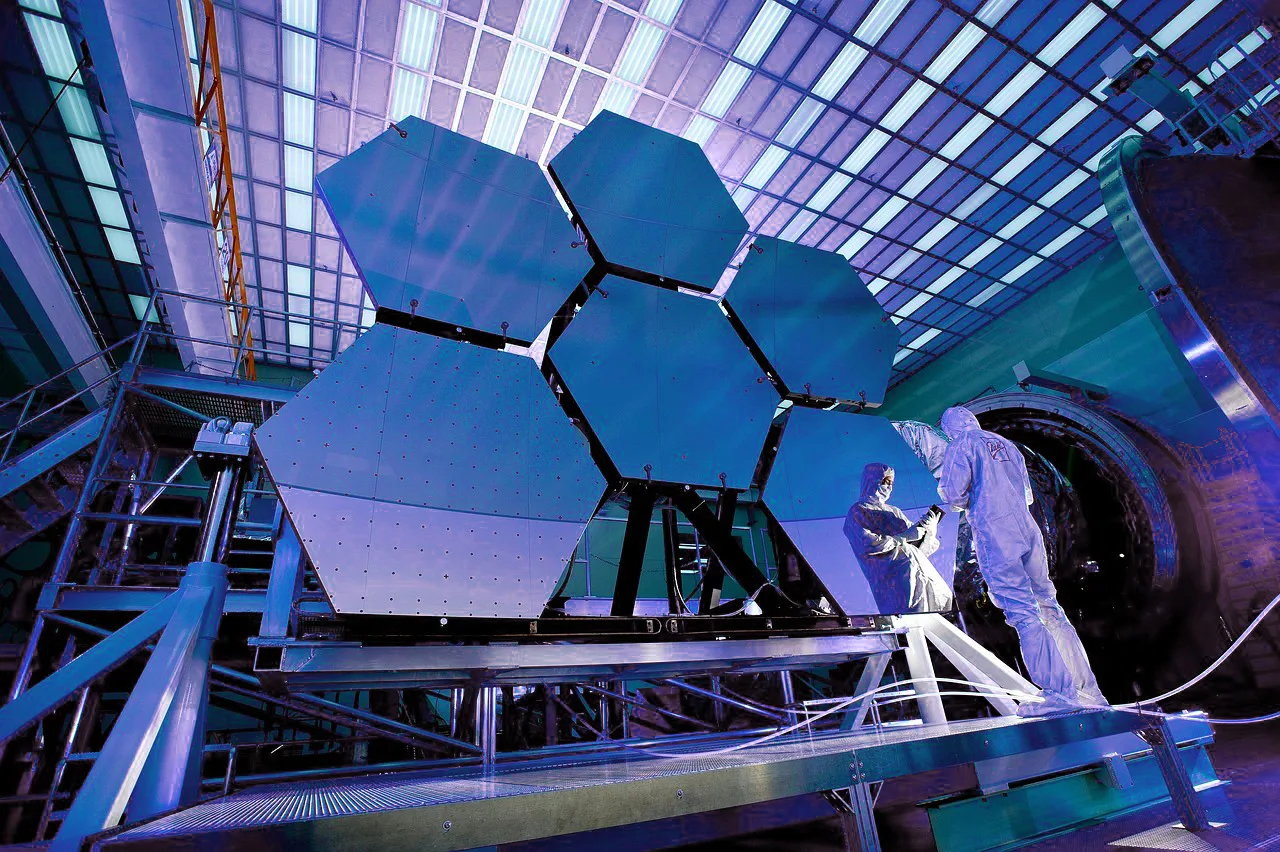
By the late 1980s, astronomers faced a fundamental limitation in telescope construction: the practical size limit of monolithic mirrors. Traditional casting and polishing techniques struggled with mirrors larger than 8 meters, yet the scientific demand for greater light-gathering power continued to grow. The solution came in the form of segmented mirrors—large primary mirrors composed of multiple smaller segments aligned with extraordinary precision to function as a single optical surface. This revolutionary approach eliminated the size constraints of single-mirror telescopes and ushered in the era of truly giant observatories.
Alongside segmented mirror technology came equally important innovations in how these massive instruments correct for atmospheric distortion. The combination of large collecting areas with sophisticated correction systems has allowed ground-based telescopes to approach—and in some ways exceed—the capabilities of space telescopes at a fraction of the cost. This technological convergence has enabled discoveries ranging from direct imaging of exoplanets to observations of the universe’s most distant galaxies, fundamentally reshaping our understanding of cosmic evolution.

Keck Observatory ground-based optical telescopes
The pioneering implementation of the segmented mirror concept came with the twin 10-meter Keck telescopes atop Mauna Kea in Hawaii, with Keck I beginning operations in 1993, followed by Keck II in 1996. Each primary mirror consists of 36 hexagonal segments, each 1.8 meters across and just 75 mm thick. These lightweight segments are continuously aligned by computer-controlled actuators that maintain positioning to within 4 nanometers—about the size of a few atoms. This precision engineering created telescopes with four times the light-gathering capacity of the previous generation’s largest instruments while avoiding the manufacturing challenges of casting a single 10-meter mirror.
The Keck telescopes demonstrated that segmented mirror technology could deliver exceptional image quality, quickly proving their scientific worth with discoveries including direct measurements of supermassive black hole masses in galactic centers, detection of some of the most distant known galaxies, and pioneering observations of exoplanetary systems. Their success established a new paradigm for telescope construction that continues to influence observatory design to this day, with virtually all new large telescope projects adopting some version of the segmented approach.
The European Southern Observatory took a different approach with its Very Large Telescope (VLT) in Chile’s Atacama Desert, which began full operations in 2000. Rather than segmenting individual mirrors, the VLT consists of four separate 8.2-meter telescopes that can work independently or combine their light through interferometry. This flexibility allows astronomers to either observe different targets simultaneously or use the array as a virtual 16-meter telescope with unprecedented resolving power. The VLT’s innovative design has made it the most scientifically productive ground-based observatory in history, generating more peer-reviewed publications than any other telescope facility.
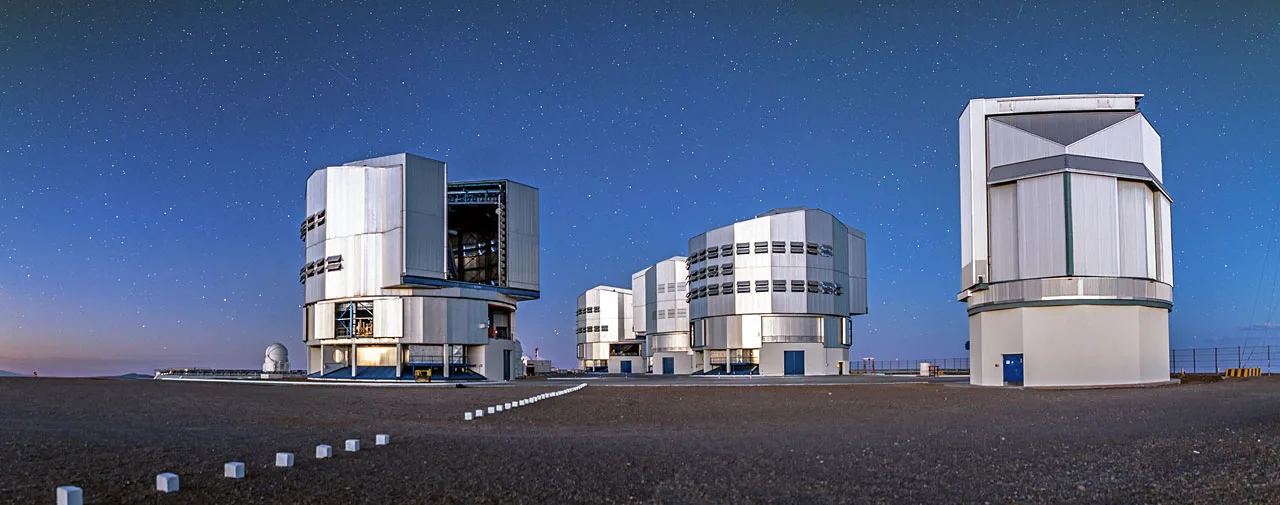
All four of the VLT's Unit Telescopes can be seen in this image, as well as the VLT Survey Telescope (far right). Whereas the VLT is designed to examine small areas of the sky in tremendous detail, the VST surveys large swathes of the sky in a much shorter time, collecting a huge archive of data that can be used to find small, interesting objects, such as near-Earth asteroids, exoplanets, and distant quasars.
Active and Adaptive Optics: Defeating Atmospheric Turbulence
Perhaps the most revolutionary advance in modern ground-based astronomy has been the development of adaptive optics (AO) systems that correct for atmospheric distortion in real time. These systems use deformable mirrors controlled by high-speed computers to counteract the blurring effects of Earth’s atmosphere, achieving resolutions that approach the theoretical diffraction limit of the telescope.
Modern AO systems measure atmospheric distortion using either natural guide stars or artificial laser guide stars that create reference points in the upper atmosphere. By analyzing the wavefront distortion of these reference sources thousands of times per second and making corresponding adjustments to deformable mirrors, these systems can effectively “freeze” atmospheric turbulence and recover near-perfect images.
100× Improvement in Sensitivity
The combined effect of larger mirrors, electronic detectors, and adaptive optics has increased the sensitivity of ground-based telescopes by approximately two orders of magnitude since the 1980s. Objects that would have required hundreds of hours of exposure with photographic plates can now be detected in minutes, while entirely new classes of astronomical targets have become observable from Earth. This dramatic improvement has enabled ground-based observatories to maintain their scientific relevance even in the era of space telescopes, with complementary capabilities that make them essential partners in astronomical research rather than obsolete technology.
The pace of innovation shows no signs of slowing, with each generation of instruments pushing boundaries in wavelength coverage, spectral resolution, and imaging capabilities. Technologies that seemed experimental just decades ago—such as integral field spectroscopy, which captures a spectrum for each pixel in an image—have become standard tools enabling three-dimensional analysis of complex astronomical objects.
The first two decades of the 21st century have seen a flowering of giant telescope facilities around the world, each employing cutting-edge technology to address fundamental questions in astronomy. These modern observatories typically occupy carefully selected sites chosen for exceptional atmospheric conditions—high altitude, dry climate, minimal light pollution, and stable air flow. The competition for optimal observatory locations has led to international diplomatic arrangements and complex agreements with indigenous populations, recognizing that the best astronomical sites are often culturally and environmentally significant landscapes requiring careful stewardship.
Gran Telescopio Canarias: Spain’s Eye on the Universe
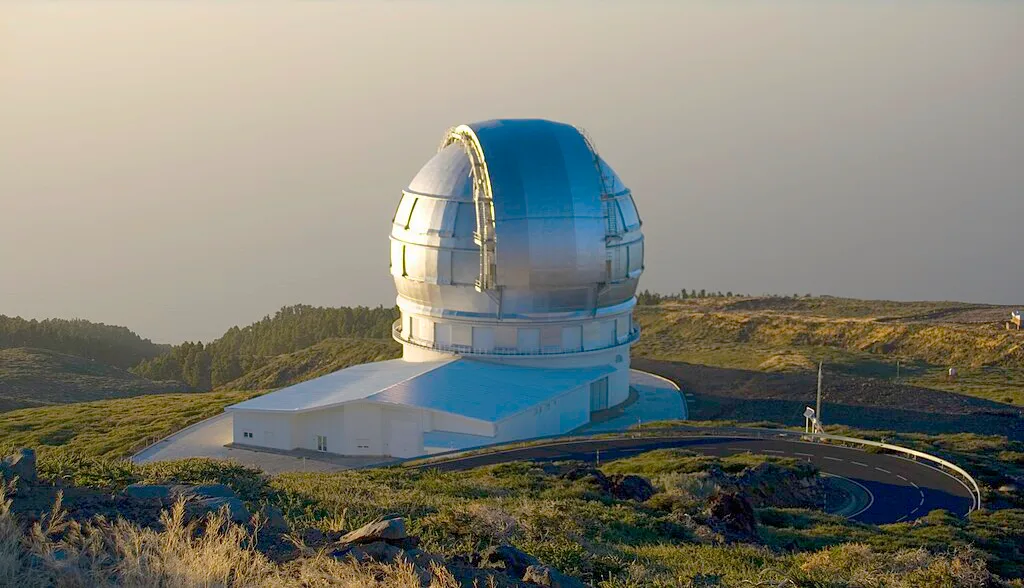
Gran telescopio
Completed in 2009 atop the island of La Palma, the Gran Telescopio Canarias (GTC) stands as Spain’s crowning astronomical achievement. With a segmented primary mirror spanning 10.4 meters, it briefly held the title of world’s largest single optical telescope. The GTC’s 36 hexagonal segments work together with active optics systems that adjust the mirror shape 20 times per second, compensating for gravity’s effects as the telescope moves. This Spanish-led project demonstrates how medium-sized countries can make significant contributions to world-class astronomy through strategic investments and international partnerships.
Large Binocular Telescope: Two Primary Mirrors Working Together
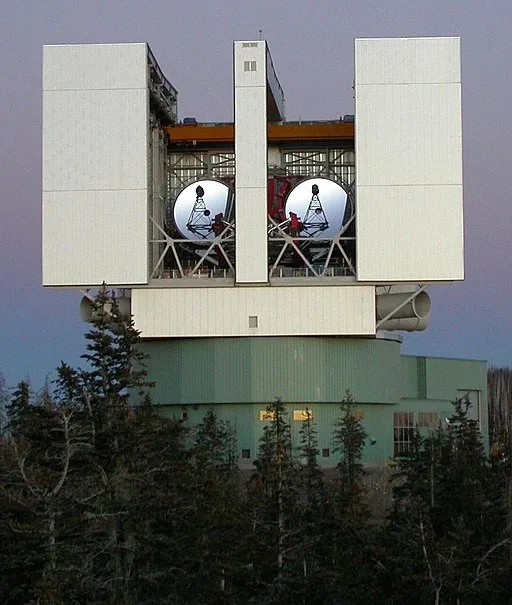
Gran telescopio
Completed in 2009 atop the island of La Palma, the Gran Telescopio Canarias (GTC) stands as Spain’s crowning astronomical achievement. With a segmented primary mirror spanning 10.4 meters, it briefly held the title of world’s largest single optical telescope. The GTC’s 36 hexagonal segments work together with active optics systems that adjust the mirror shape 20 times per second, compensating for gravity’s effects as the telescope moves. This Spanish-led project demonstrates how medium-sized countries can make significant contributions to world-class astronomy through strategic investments and international partnerships.
Southern African Large Telescope (SALT): Affordable Innovation
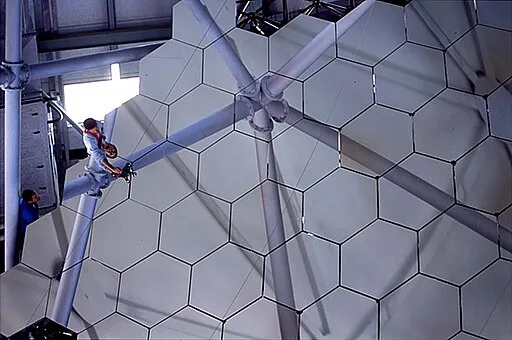
Not all modern giant telescopes follow the same design philosophy. The Southern African Large Telescope in South Africa represents an innovative approach focused on maximizing scientific return while minimizing construction costs. Based on the Hobby-Eberly Telescope design in Texas, SALT features a fixed-altitude primary mirror composed of 91 hexagonal segments.
Rather than moving the entire massive telescope structure to track celestial objects, only a lightweight tracker assembly at the prime focus moves during observations. While this design limits the portion of sky observable at any given time, it dramatically reduces engineering complexity and cost, making frontier astronomy accessible to developing nations.
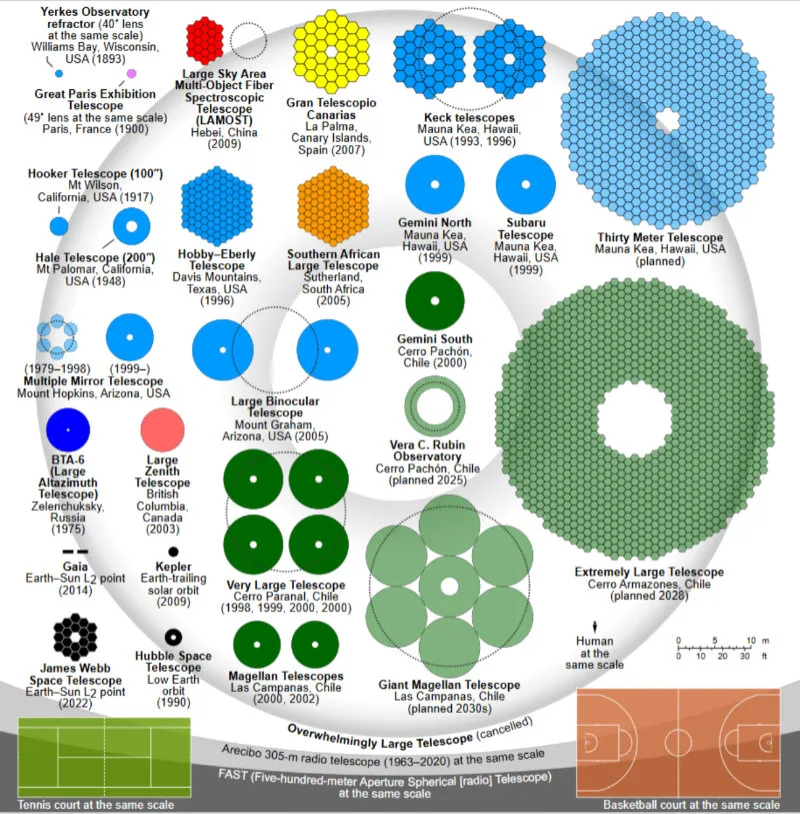
Comparison of nominal sizes of apertures of notable ground-based optical telescopes
The impressive Celestron Schmidt-Cassegrain telescope SC 356/3910 CGX-L 1400 GoTo
Today’s professional and impressive amateur telescopes, like the above Celestron CAT offering, bear little resemblance to the simple tubes Galileo pointed skyward. Modern telescopes are complex systems integrating mechanical engineering, optics, electronics, and computing to extract maximum information from each photon of cosmic light. Understanding these systems requires looking beyond the impressive primary mirrors to the sophisticated instruments that analyze the collected light and the software systems that transform raw data into scientific discoveries.
Light Collection: Bigger is Better
The fundamental limitation in observing faint objects remains photon collection – more incoming light means more signal to analyze. This simple reality drives the push for ever-larger primary mirrors, whether as monolithic disks, segmented arrays, or multiple telescopes working together. Today’s largest telescopes can detect objects billions of times fainter than the human eye, gathering enough light from distant galaxies in a few hours to reveal their composition, motion, and history. The light-gathering power of these instruments directly determines which objects astronomers can study and what questions they can answer about cosmic evolution.
Wavefront Sensors and Deformable Mirrors
The heart of modern adaptive optics systems lies in their ability to measure and correct wavefront distortions thousands of times per second. Wavefront sensors split off a small portion of incoming light from a reference star (natural or artificial) and precisely measure how atmospheric turbulence has distorted the originally flat wavefront. This information feeds to a deformable mirror – typically a thin reflective surface backed by hundreds of piezoelectric actuators that can push or pull with microscopic precision.
As the actuators adjust their positions, they create an inverse pattern of the measured distortion, effectively canceling out atmospheric blurring when light reflects off the mirror’s surface. The most advanced systems now incorporate multiple correction stages and can achieve sharper images than space telescopes in certain wavelengths, particularly in the infrared spectrum.
Spectroscopy: Breaking Light into Its Components
While stunning images capture public imagination, most professional astronomy relies on spectroscopy – the technique of separating light into its component wavelengths. Modern spectrographs can analyze thousands of objects simultaneously, measuring the chemical composition, temperature, density, motion, and even magnetic fields of distant objects.
Technologies like integral field spectroscopy combine imaging and spectroscopy by capturing a complete spectrum for each pixel in an image, allowing astronomers to create three-dimensional maps of complex objects like galaxy mergers or star-forming nebulae. The precision of these instruments is staggering – high-resolution spectrographs can detect the tiny wavelength shifts caused by an Earth-sized planet tugging on its parent star, revealing exoplanets impossible to image directly.
Astronomy stands on the cusp of another revolutionary leap forward with a new class of ground-based telescopes under construction around the world. These “Extremely Large Telescopes” (ELTs) will feature primary mirrors between 25 and 40 meters in diameter, collecting 5-15 times more light than today’s largest instruments. Combined with next-generation adaptive optics, these observatories will enable direct imaging of rocky exoplanets, detailed studies of the first galaxies formed after the Big Bang, and potentially even direct detection of the universe’s acceleration. The engineering challenges are immense, but the scientific promise is greater still, driving international collaborations and technological innovations that extend far beyond astronomy.
Extremely Large Telescope: A 39-meter Behemoth

Image credit: ESO/L. Calçada
The European Southern Observatory’s Extremely Large Telescope (ELT), under construction in Chile’s Atacama Desert, will feature a primary mirror 39 meters in diameter composed of 798 hexagonal segments. This massive light bucket will collect more than 13 times the light of today’s largest optical telescopes, enabling the detection of objects 40 million times fainter than what the human eye can see. The ELT’s revolutionary five-mirror design incorporates adaptive mirrors directly into the main optical path, providing diffraction-limited images over a relatively wide field of view.
The engineering scale of the ELT is difficult to comprehend – its dome will stand nearly as tall as a 20-story building, yet must rotate with extreme precision to track celestial objects. The mirror segments must maintain alignment within nanometers despite temperature changes and mechanical stresses. When completed in the mid-2020s, the ELT will address fundamental questions about planetary formation, detect biomarkers in exoplanet atmospheres, and directly measure the universe’s expansion rate.
The ELT’s first-generation instruments showcase the diversity of modern astronomical research. HARMONI will provide integral field spectroscopy across the visible and near-infrared spectrum; MICADO will deliver diffraction-limited imaging and spectroscopy; METIS will explore the thermal infrared regime where planets and dust shine brightest; and HIRES will perform ultra-stable high-resolution spectroscopy capable of detecting oxygen in exoplanet atmospheres – a potential biosignature that could indicate alien life.
30 Meter Telescope: Controversy and Promise
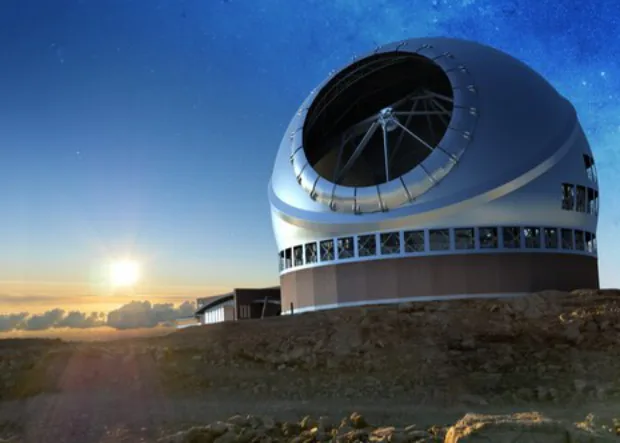
Image credit: TMT International Observatory
The Thirty Meter Telescope (TMT) represents both astronomical ambition and the complex intersection of science with cultural and environmental concerns. Designed as a 30-meter segmented mirror telescope with powerful adaptive optics capabilities, the TMT has faced significant opposition to its planned construction on Mauna Kea in Hawaii, a mountain considered sacred by many native Hawaiians.
The ongoing controversy has highlighted the importance of engaging indigenous perspectives in scientific planning and raised fundamental questions about who controls access to the best observatory sites. As the project works toward resolution through dialogue with Native Hawaiian representatives, alternative sites in Spain’s Canary Islands remain under consideration, demonstrating how modern astronomy must navigate not just technical challenges but social and cultural considerations as well.
Giant Magellan Telescope: Seven Perfect Mirrors
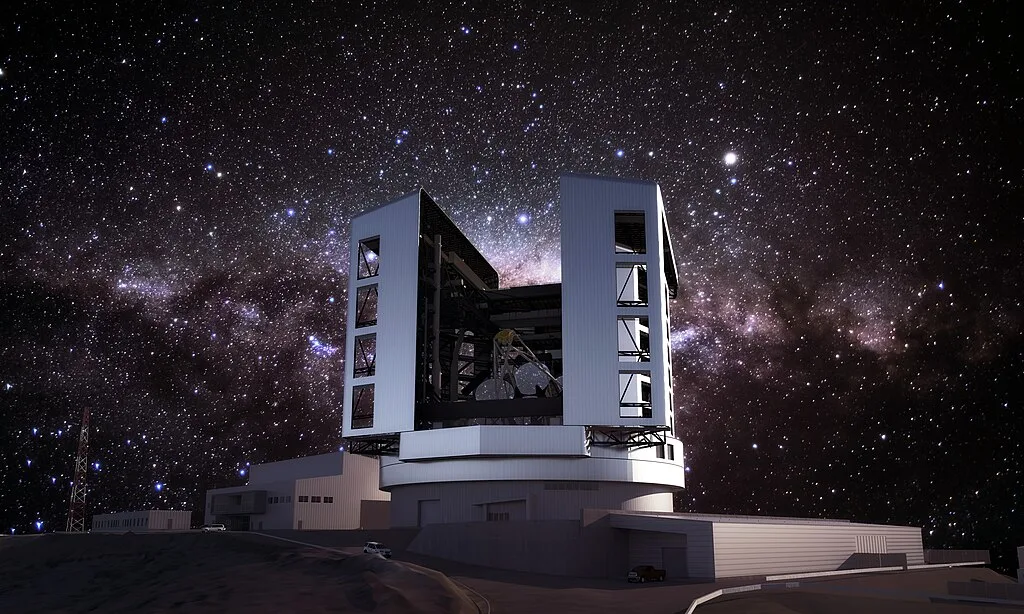
Image credit: NOIRLab/NSF/AURA
Taking a different approach to achieving an enormous collecting area, the Giant Magellan Telescope (GMT) under construction in Chile will combine seven of the world’s largest monolithic mirrors – each 8.4 meters in diameter – into a single optical system with the equivalent light-gathering power of a 24.5-meter telescope.
This unique design offers advantages in collecting area per dollar invested and simplifies the adaptive optics system by incorporating deformable secondary mirrors that can correct for atmospheric distortion without requiring additional optical elements. The GMT’s seven-fold symmetry poses unique engineering challenges but promises exceptional image quality across a wide field of view when it begins operations later this decade.
Despite the undeniable advantages of space-based observatories like the Hubble and James Webb Space Telescopes – freedom from atmospheric interference, access to ultraviolet and mid-infrared wavelengths absorbed by Earth’s atmosphere, and consistent 24-hour observing conditions – ground-based telescopes remain essential to modern astronomy. The fundamental advantage comes down to economics and flexibility: for a given budget, astronomers can build a much larger telescope on Earth than in space, collecting significantly more photons and enabling observation of fainter objects.
Ground facilities can be regularly upgraded with new instruments as technology advances, while space telescopes are limited to the technology available at launch. Perhaps most importantly, the coming generation of ELTs will achieve angular resolutions exceeding space telescopes in certain wavelengths thanks to advanced adaptive optics, making them complementary rather than competing facilities.
The partnership between ground and space observatories has proven tremendously productive, with each type of facility contributing unique capabilities to astronomical research. When the James Webb Space Telescope identifies interesting distant galaxies, ground-based spectroscopy can efficiently measure their redshifts and compositions. When ground-based surveys discover exoplanets, space telescopes can characterize their atmospheres free from terrestrial contamination. This synergy between observing platforms maximizes scientific return on investment and accelerates discovery across all fields of astronomy.
The most significant astronomical discoveries often emerge from the combined power of multiple observatories working in concert. When the LIGO gravitational wave detectors supposedly identified the merger of two neutron stars in 2017, dozens of ground and space telescopes swung into action to observe the electromagnetic counterpart across the spectrum, trying to revolutionize our understanding of how heavy elements form.
Unfortunately, with their unreal gravity-centric paradigm, mainstream astronomers are led down the wrong path. The first so-called image of a black hole’s shadow required coordinating radio telescopes across the globe to function as a single Earth-sized interferometer. What they captured is not a black hole. In the Electric Universe theory, it is a standard electrical phenomenon called a plasmoid. Still, as astronomy moves increasingly toward multi-messenger observations – combining light, neutrinos, and cosmic rays – the coordination between different telescope facilities becomes as important as the capabilities of any individual observatory.
The evolution of telescope technology spans over four centuries of human innovation, from simple hand-held spyglasses to stadium-sized observatories atop remote mountains. Throughout this journey, certain fundamental questions recur about how these remarkable instruments function and why they’re designed as they are.
These questions reflect not just curiosity about the technology itself but deeper interests in how humans have extended our senses to explore realms far beyond our direct experience. The story of telescopes is ultimately a story of human ingenuity overcoming physical limitations to satisfy our innate desire to understand our place in the cosmos.
What’s the difference between refracting and reflecting telescopes?
Refracting telescopes use lenses to collect and focus light. Light passes through a large objective lens at the front of the telescope, which bends (refracts) it to form an image that’s magnified by the eyepiece. This design, pioneered by Galileo and improved by Kepler, suffers from chromatic aberration, where different colors focus at different points, creating colored fringes around bright objects.
While modern apochromatic designs using special glass combinations minimize this problem, refracting telescopes face practical size limitations because large lenses must be supported only around their edges and become prohibitively heavy and expensive beyond about 1 meter in diameter.
Apochromatic refractor Pro APO 85/560 ED Triplet CEM26 LiteRoc
Reflecting telescopes use mirrors instead of lenses as their primary light collectors. Light bounces off a concave primary mirror at the back of the telescope tube and is directed to a focus point where it can be analyzed with various instruments. Because light reflects from the front surface rather than passing through glass, reflecting telescopes avoid chromatic aberration entirely. More importantly, mirrors can be supported across their entire back surface, allowing for much larger apertures than refracting designs. Virtually all modern research telescopes are reflectors, though they often incorporate refractive elements in their secondary optics and instruments.
Reflector Telescope N 150/750 PDS Explorer BD EQM-35 PRO SynScan GoTo
Why are most modern research telescopes built on mountains?
Mountain observatory sites offer several critical advantages that dramatically improve telescope performance. Higher elevation means less atmosphere for light to travel through, reducing absorption and scattering of incoming photons. The thinner air at altitude contains less water vapor, which is crucial for infrared observations since water molecules strongly absorb infrared light. Many premium sites also feature thermal inversions where the air near the observatory is warmer than layers below, reducing convection currents that would otherwise cause image distortion.
Beyond atmospheric considerations, remote mountaintop locations minimize light pollution from human activities, preserving the dark skies essential for observing faint objects. Sites in Hawaii, Chile, and the Canary Islands are particularly valued for their combination of high altitude, clear weather patterns, stable atmospheric conditions, and isolation from population centers. The competition for access to these premium locations drives international collaboration, as the best sites can support multiple major observatories sharing infrastructure costs while conducting complementary science programs.
How do adaptive optics work?
Adaptive Optics in Five Steps:
- Measure distortion: Wavefront sensors analyze light from a reference star
- Calculate correction: Computers determine the opposite pattern needed
- Adjust mirror: Deformable mirrors reshape their surface thousands of times per second
- Verify correction: Feedback loop continuously monitors and refines adjustments
- Apply to science target: Corrections for reference star improve nearby target imaging
Adaptive optics represents one of the most sophisticated technologies employed in modern astronomy, effectively giving ground-based telescopes vision correction in real-time. The system begins by measuring how Earth’s atmosphere has distorted incoming light from a reference star. This reference can be either a bright natural star near the science target or an artificial “laser guide star” created by shooting a powerful laser into the atmosphere to excite sodium atoms about 90 kilometers up, creating a glowing reference point where needed.
The wavefront sensor splits this reference starlight into hundreds or thousands of sub-apertures and precisely measures the distortion in each region. A high-speed computer calculates the inverse pattern needed to correct these distortions, then sends commands to a deformable mirror composed of many small segments controlled by piezoelectric or electromagnetic actuators. These actuators push and pull on the mirror surface with nanometer precision, reshaping it to counteract the measured atmospheric distortion. This entire process happens in a continuous feedback loop operating at rates from hundreds to thousands of corrections per second – fast enough to “freeze” the atmosphere’s turbulence.
The latest adaptive optics systems incorporate multiple correction stages and can achieve Strehl ratios (a measure of optical quality) exceeding 80 percent in near-infrared wavelengths, approaching the theoretical perfect performance of the telescope. This technology has transformed ground-based astronomy, enabling observations previously possible only from space and opening new frontiers in exoplanet imaging, galactic center studies, and high-resolution studies of solar system objects.
Can ground-based optical telescopes see as far as space telescopes?
“Seeing far” in astronomy has multiple meanings that require careful distinction. In terms of distance, both ground and space telescopes can observe objects billions of light-years away – essentially looking back to the earliest epochs of the universe. The limiting factor for extreme distance observation is not typically atmospheric interference but rather the brightness of the objects themselves and the collecting area of the telescope. Since ground-based telescopes can be built much larger than space telescopes, they often have an advantage in collecting photons from extremely distant but faint sources.
Where space telescopes excel is in resolution (the ability to distinguish fine details) and in accessing wavelengths blocked by Earth’s atmosphere. Without atmospheric blurring, space telescopes can consistently achieve their theoretical resolution limit across all wavelengths. However, adaptive optics has narrowed this gap significantly for ground-based observatories, particularly in infrared wavelengths. The coming generation of extremely large ground-based telescopes with advanced adaptive optics will exceed the resolution of the James Webb Space Telescope in near-infrared wavelengths, though space telescopes retain their advantage in ultraviolet and mid-to-far infrared observations.
The ideal approach combines the strengths of both platforms – using the superior collecting area of ground-based telescopes to find and characterize faint objects, then following up with space telescopes to observe critical wavelengths inaccessible from Earth or to achieve the extremely stable conditions needed for certain precision measurements. This complementary relationship maximizes scientific return across the full electromagnetic spectrum.
What’s the largest optical telescope currently in operation?
As of 2025, the Gran Telescopio Canarias (GTC) on Spain’s La Palma island holds the title of largest single optical telescope with its 10.4-meter segmented primary mirror. However, the twin 10-meter Keck telescopes in Hawaii, the 10.4-meter Southern African Large Telescope (SALT), and the twin 8.4-meter Large Binocular Telescope (LBT) in Arizona are all in roughly the same class when considering effective collecting area. The exact ranking depends on whether one considers total light-gathering area, diameter, or resolving power as the defining characteristic.
The landscape will change dramatically in the coming decade as the next generation of extremely large telescopes comes online. The European Extremely Large Telescope (ELT) with its 39-meter primary mirror will dwarf current facilities, collecting about 13 times more light than today’s largest telescopes. The Giant Magellan Telescope (GMT) with its seven 8.4-meter mirrors and the Thirty Meter Telescope (TMT) will similarly transform observational capabilities if completed as planned. These facilities represent the culmination of four centuries of telescope development, enabling observations that would have seemed like science fiction to previous generations of astronomers.
The race for larger apertures continues to drive innovation in optical fabrication, control systems, and data processing. Each generation of telescopes has revealed unexpected discoveries that reshape our understanding of the universe, suggesting that the coming giants will almost certainly expose phenomena currently unknown to science. This continuing cycle of technological innovation leading to scientific discovery, which then drives demand for even more capable instruments, has characterized astronomy since Galileo first pointed his modest spyglass at Jupiter over four centuries ago.
Challenge the standard model—explore the cosmos through the Electric Universe Theory. These Electric Constellations books contain full-color, data-rich investigations of four constellations each. They're not a beginner's star guide—they're a serious work for independent thinkers, astronomers, and scientifically literate readers seeking to understand the Universe beyond conventional gravity-based interpretations.
Each constellation is examined in detail, with attention to its Bayer-designated stars, mythological origins, meteor showers, and bordering constellations. In-depth profiles of deep-sky objects—including galaxies, planetary nebulae, and star clusters—are paired with high-resolution imagery from the Webb and Hubble space telescopes, delivering both scientific clarity and visual impact.
Central to this series is the Electric Universe (EU) model, which proposes that electromagnetic forces—not gravity alone—govern much of the structure and behavior of the cosmos. Rather than treating this as speculative fringe, the book frames the EU model as an evidence-based, plasma-physics-informed alternative to the standard cosmological narrative.
Inside each volume:
- Comprehensive coverage of four distinct constellations
- Analyses of deep-sky objects in the EU context
- Original commentary on plasma discharge features and Z-pinch configurations
- Mythological and historical context without romantic embellishment
Written for readers who demand more than rote repetition of gravitational dogma, Electric Constellations opens a new observational and theoretical frontier—where stars light by electrical currents, not fusion, and where structure emerges from plasma dynamics, not dark matter.
Whether you are an amateur astronomer, electrical engineer, or astrophysicist curious about alternative models, these books deliver a rigorous and visually stunning exploration of the night sky—illuminated by a very different current.
